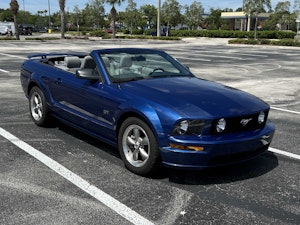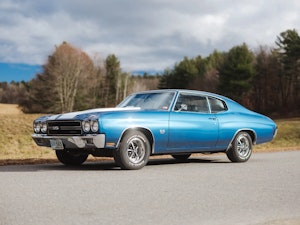Media | Articles
How Not to Restore a Car
About 15 years ago I bought a Jaguar XK-120 roadster with the intention of going vintage racing. The car was pretty shaggy but it suited my budget, it ran OK and had potential for racing if not shows and concours. Give it some mechanical attention like replacing a worn gearbox, bring it up to snuff for safety, a quickie repaint and then off to the races, I figured.
With the help of my mechanic friend Jim, who can fix anything from a John Deere tractor to a Bugatti, we got the Jag into pretty good shape underneath, albeit at far more cost than I had planned. XK parts are expensive now, and they were just as pricey back then. I even managed to track down a set of correct Michelin X “Spot” radials for the old beast.
Meanwhile, on a vintage rally, a friend spoke of his “dream car,” an XK-120 roadster in Old English White with tan leather and wheel spats (fender skirts to most of us). I mentioned that I had the very car and was going racing with it. The chase was on; he just had to have it. This was his dream car. He asked to see it. He asked to drive it. He asked how much. I shot him a price that I figured would scare him off. It didn’t. He bought it instead with no argument and no bargaining and he paid in full.
Understand that my friend is a perfectionist. He’s one of the funniest guys and the best company you could ask for but when it comes to his cars, they have to be just right. So he takes the car to a prominent Jaguar specialist and says the fatal words: I want the best 120 roadster in the country. What sweeter music could a restorer ask to hear? About three years later, the Jag emerged from the restoration shop, having cost a whisker under $150,000 to change a potential rat racer to what was planned to be “the best 120 roadster in the country.” Yep, 150 grand, not counting the car’s purchase price when he bought it from me.
In fairness to the shop, the car needed much more than I had anticipated. (They usually do when you get into a full-tilt restoration, which is why I didn’t want to do one.) And my friend rejected work that other collectors might have found satisfactory. Still, the car ended up costing the price of three ground-up restorations for normal 120 roadster projects. If he had restored a C-type Jag for that money, he’d be in clover but with a standard XK-120, he was deep in something far less fragrant.
Marketplace
Buy and sell classics with confidence
I drove the car a few months after its restoration. It was a tribute to the restorer’s art, a miracle really. It drove and looked as good if not better than new. The body panels fit with the precision of a bespoke suit. The interior was fit for a yacht. It was spot-on correct inside and out. For a fleeting moment I regretted selling the car. But instead of rejoicing at the results, my friend was distressed and disgusted. He had taken the Jag to a big Britcar meet for its debut, and it placed second to a Jaguar that was blatantly incorrect in many areas. That’s not his opinion. I knew the car and it had numerous deficiencies.
He shipped the Jag to his winter home to enjoy top-down sports car motoring when he and his wife were in town. But he could never really come to grips with the car. He didn’t like the way it operated. It was uncomfortable. It sometimes wouldn’t start and run, and it sometimes left him stranded.
He finally threw in the towel and consigned it to a Barrett-Jackson auction at no reserve where a museum owner snapped it up for $45,000. For my friend, a sad and disappointing end to a long-held dream. For the museum, an absolute rock-bottom steal on a superb car.
The lessons learned? Don’t try to restore a car from the ground up that’s readily available on the market for far less than your potential purchase and restoration costs. Don’t take any car to a professional shop and do what my friend did – essentially tell the restorer he has carte blanche to run the bill as high as it could go. And don’t debut your car at a show where the judges aren’t qualified or informed enough to know a “right” car from a “wrong” one.
The Jaguar is still on display at the museum. And it still has the Michelin X “Spot” tires I bought for it. I’d be glad to give them back their investment any time they’re ready to sell it. And I promise not to race it.
Dave Brownell is the founding editor of Old Cars, the long-time editor of Hemmings Motor News and Special-Interest Autos magazine, and currently works as a motoring writer and vintage car appraiser. His work has appeared in AutoWeek, Automobile Quarterly, Car Collector, Sports Car Market, Auto Aficionado and Automobile magazine. He lives with his wife and their cars and pets in East Dorset, VT.










